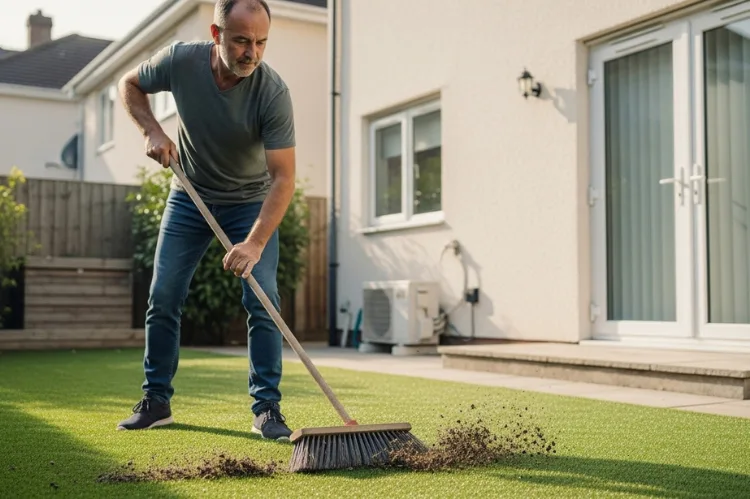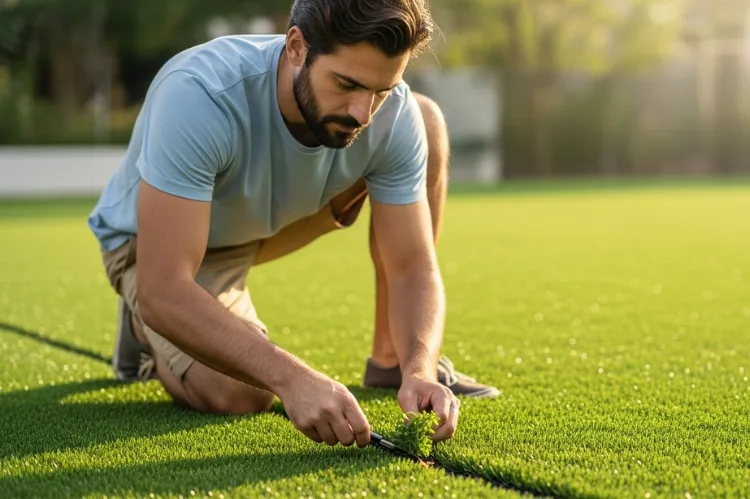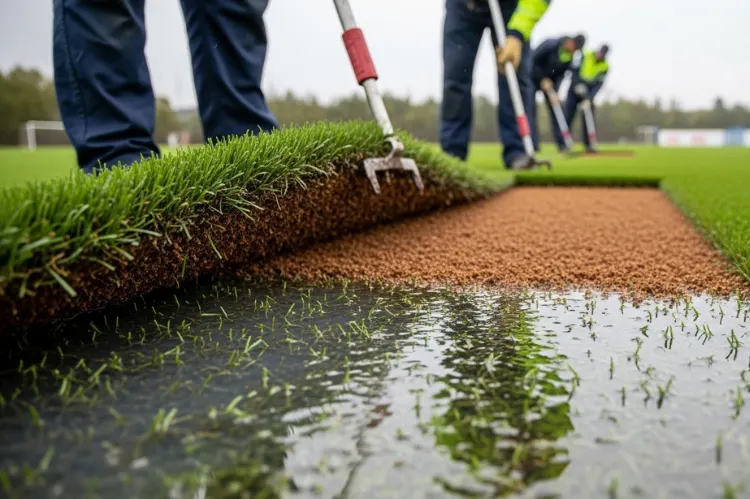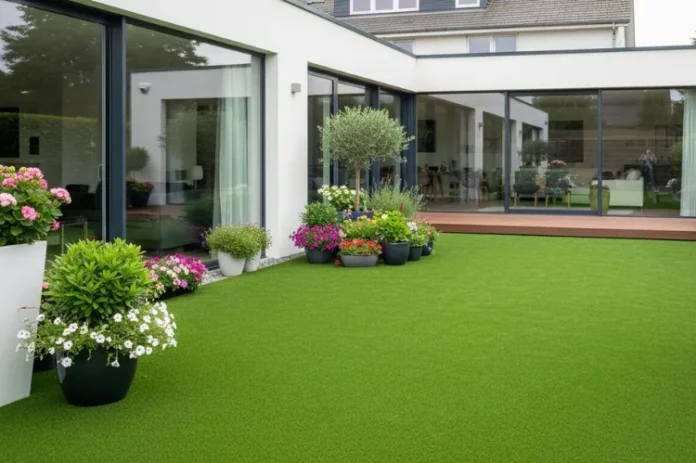Artificial turf has earned its place in modern landscaping by offering visual consistency and lower upkeep demands than traditional grass. More homeowners are drawn to synthetic turf for its neat appearance and ability to stay green without frequent watering or mowing. Even though it reduces many of the chores tied to natural lawns, artificial grass still requires attention to maintain its performance and longevity.
Understanding how to care for artificial turf long-term helps homeowners avoid premature wear and unnecessary costs. Whether you already have turf installed or are considering the switch, learning what to expect after the initial setup makes a difference in overall satisfaction and property aesthetics.
What Makes Artificial Turf So Appealing
 Homeowners often cite aesthetics and convenience as top reasons for switching to synthetic grass. Besides looking green in every season, turf eliminates the time and cost of mowing, fertilizing, and irrigation. These benefits become even more apparent in regions with water restrictions or unpredictable climates.
Homeowners often cite aesthetics and convenience as top reasons for switching to synthetic grass. Besides looking green in every season, turf eliminates the time and cost of mowing, fertilizing, and irrigation. These benefits become even more apparent in regions with water restrictions or unpredictable climates.
The visual consistency adds a refined feel to outdoor spaces and often pairs well with modern hardscaping. This appeal fuels growth in the industry, leading many to learn why homeowners love artificial grass yards and what it means for their maintenance responsibilities. Recognizing what goes into keeping it in top shape gives a more accurate picture of long-term ownership.
Routine Cleaning Keeps Turf Looking Its Best
 Dirt, pollen, leaves, and airborne debris can build up between the fibers of synthetic grass. While rain provides a natural rinse, homeowners should use a leaf blower or stiff broom to remove surface material regularly. For stubborn debris, rinsing the area with a garden hose clears contaminants that might otherwise trap bacteria or affect drainage.
Dirt, pollen, leaves, and airborne debris can build up between the fibers of synthetic grass. While rain provides a natural rinse, homeowners should use a leaf blower or stiff broom to remove surface material regularly. For stubborn debris, rinsing the area with a garden hose clears contaminants that might otherwise trap bacteria or affect drainage.
Pet owners should take special care with solid and liquid waste. Removing solids quickly and rinsing with a mild soap solution preserves hygiene and prevents odor. By sticking to a cleaning schedule, homeowners keep their turf neat and avoid deterioration of the infill and backing system.
Avoiding Damage from Heat and Sharp Objects
 Artificial turf holds up well in a range of weather conditions, but it remains vulnerable to concentrated heat. Hot grill embers, cigarette ash, and fire pits can melt synthetic fibers and leave visible scars. Placing heat-generating items on patio stones or non-flammable surfaces protects your turf investment.
Artificial turf holds up well in a range of weather conditions, but it remains vulnerable to concentrated heat. Hot grill embers, cigarette ash, and fire pits can melt synthetic fibers and leave visible scars. Placing heat-generating items on patio stones or non-flammable surfaces protects your turf investment.
Sharp garden tools or pointed furniture legs may puncture the backing or cause fiber breakage. Choose protective pads under patio furniture and store tools properly to keep the area safe and intact. Simple precautions make a significant difference in how the turf performs year after year.
Preventing Weed Intrusion and Edge Lifting
 Weeds don’t thrive in artificial turf like they do in soil-based yards, but occasional growth may occur along seams or around the perimeter. Pulling weeds manually works well for isolated cases. For broader prevention, applying a weed barrier during installation provides extra defense.
Weeds don’t thrive in artificial turf like they do in soil-based yards, but occasional growth may occur along seams or around the perimeter. Pulling weeds manually works well for isolated cases. For broader prevention, applying a weed barrier during installation provides extra defense.
Edge lifting happens when the turf loosens from its border, typically due to weather, foot traffic, or installation flaws. Securing loose areas with landscape staples or adhesives helps maintain a flat, finished look. Routine inspection of edges ensures minor issues don’t expand into costly repairs.
Managing Traffic Patterns and Matting
Heavy use areas like pathways, pet runs, or play zones may show signs of compression. When fibers appear matted or flat, brushing them against the grain helps restore their upright form. Use a power broom or stiff-bristled rake designed for artificial grass to revive the appearance without damaging the blades.
For lawns that experience consistent directional traffic, rotating outdoor furniture and play equipment distributes wear more evenly. These small adjustments extend the life and appearance of the turf, preserving its value and curb appeal.
Monitoring Drainage and Infill Levels

Artificial turf relies on proper drainage to stay dry and clean. Clogged drainage systems can cause water pooling, mold, or bacteria buildup. After heavy rain, inspecting for puddles helps identify problem spots. Gently lifting the turf and checking the sub-base allows homeowners to fix compacted or blocked areas.
Infill, whether sand, rubber, or a specialty material, keeps the turf blades upright and supports foot comfort. Wind, weather, and foot traffic can displace infill as time passes. Topping off these materials as needed maintains even coverage and keeps the turf functioning correctly.
Professional Maintenance as a Seasonal Investment

Even with diligent home care, bringing in a turf maintenance crew once or twice a year helps catch problems early. These professionals deep-clean fibers, adjust infill, and inspect for lifting or drainage concerns. Their tools and experience allow them to refresh high-traffic areas and ensure the lawn continues to perform as designed.
Investing in occasional service prevents long-term issues from forming. Whether prepping for a new season or recovering from extreme weather, professional care adds peace of mind and extra polish to your landscape.
Addressing Common Misconceptions
Some assume artificial grass takes no effort at all once it’s installed. While it removes much of the routine work tied to natural lawns, it does require regular attention. This includes cleaning, brushing, inspecting edges, and replenishing infill.
Another misconception is that turf works in every setting. Shady areas or poorly drained soils may create challenges unless addressed at the installation stage. Understanding where synthetic grass fits best allows homeowners to enjoy all the benefits without unexpected complications.
Artificial turf offers an attractive, low-maintenance solution that meets the needs of many modern homeowners. Caring for it properly ensures a long-lasting return on the initial investment. With routine attention and thoughtful use, synthetic lawns retain their vibrant appearance while supporting easier outdoor living. When maintained wisely, artificial turf delivers lasting beauty with fewer worries.
Read Next: Small Greenhouse Ideas for a Serene Garden Sanctuary

